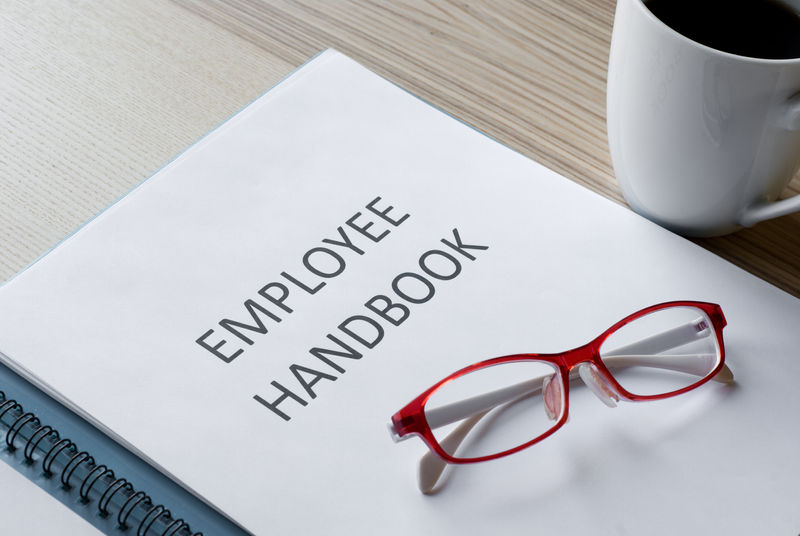
Employee Handbooks: How to Write One and Why It’s Important
Posted on 09/15/20 By Lorman Team
An employee handbook refers to a company manual given to employees by an employer, to educate workers on company procedures, policies, working conditions, and behavioral expectations.
The function of an employment handbook differs between employee to employer. While workers use employee manuals for educational purposes, employers use them to protect themselves against litigation, as the manuals contain safeguards that are intended to mitigate situations that could lead to lawsuits from workers or fines from governing bodies.
Human resource professionals or anyone occupying a managerial role could use a small business employee handbook during onboarding processes, or employee training sessions to set worker expectations and ensure legal compliance.
If you are an HR professional, in need of an employee handbook to replace an outdated version or to create one from scratch, chances are you need a guide on how to write an effective, legally compliant handbook that covers office rules, such as drug use, dress code, and performance expectations.
.jpg)
Employee Handbook Template Example
Understanding how to write an employee handbook and what to include in an employee handbook will assist you in creating a tool that can adequately service all your company needs.
Your employment handbook contents should contain:
Introduction — Your company's introduction is the most important component of your workplace handbook. It will detail your company's culture, set the tone for what you expect from your employees, and foster a sense of pride that will enhance productivity and loyalty in the workplace.
Specifically, this section is intended to answer questions such as:
- What makes this company unique?
- What are our core values?
- What is our mission?
Employee expectations — The focus of this section is to articulate the expectations you have for all of your employees clearly and concisely.
Your employee policy handbook should define the company's policies and procedures concerning:
- Requesting time off
- Reporting issues to HR
Leadership expectations — The employee manual should detail the company's objectives, and how those in leadership positions will help guide the rest of the team down the path that will help accomplish those goals.
This section should also include an outline of logistics, such as pay periods, timekeeping requirements, and information concerning federal and state entitlements (e.g. Jury Service Leave).
Key company policies — Key company policies should be clearly and consistently communicated in the manual. This section is intended to help managers answer questions and make decisions concerning company policies relating to conduct, behavior, employment, compensation, and other rules that must be understood and followed perfectly, every time.
Company benefits — If your company offers a 401 (k), health insurance, vacations, paid leave, or any other benefits to employees, the intricacies concerning the policies and eligibility requirements should be communicated in the manual.
The advantage of detailing this information is that it could be the deciding factor that convinces an applicant to accept a job, or a strong employee to stay with the company.
Federal and state compliance — Every business, regardless of the state in which you reside or the number of workers you have at your company, is required to comply with state and federal mandates.
The purpose of including this section in your manual is to not only communicate the various entitlements afforded to workers but to signal to them and governing bodies that your company is working to abide by the regulations put in place.
Defend against employee claims — Lawsuits from current and former employees are an unfortunate part of business. When claims are filed, the most valuable defense against unjust claims is your workplace handbook.
Submitting the handbook to an attorney works to prove that your company exercised "reasonable care" and will hopefully be enough to have a claim tossed out.
A tool for employees — The value of an employee handbook manifests as a tool that employees can turn to for help when they have questions and need answers. It'll help them learn more about their job and the company, and help them avoid mistakes in the workplace.
.jpg)
How to Write an Employee Handbook
A company employee handbook is an important tool that can help enhance your business's operational processes, and protect it from lawsuits due to employee claims and non-compliance.
While you can create your own manual, it is advised to seek guidance from experts to achieve greater understanding concerning the answers to questions such as why it is important to have an employee handbook? Or what should be included in an employee handbook?
Deepening your comprehension of how to create an employee handbook, in combination with the assistance of an expert who has extensive experience developing this form of documentation, can help mitigate potential legal implications and ensure employees understand workplace policies.
Learn More About This Course: Writing an Employee Handbook
Related Articles
Many states have standard CPE deadlines on June 30th or July 31st. Do you have CPE requirements to fulfill by this summer?
Training is vital in the compliance of HIPAA for healthcare providers and business associates to ensure the guaranteed privacy and security of patients’ health information.
Occupational Safety and Health Administration (OSHA) violations can vary from one business to another, but for all businesses, workplace safety is paramount. OSHA violations, penalties, and fines can be costly for your business.


.png)
